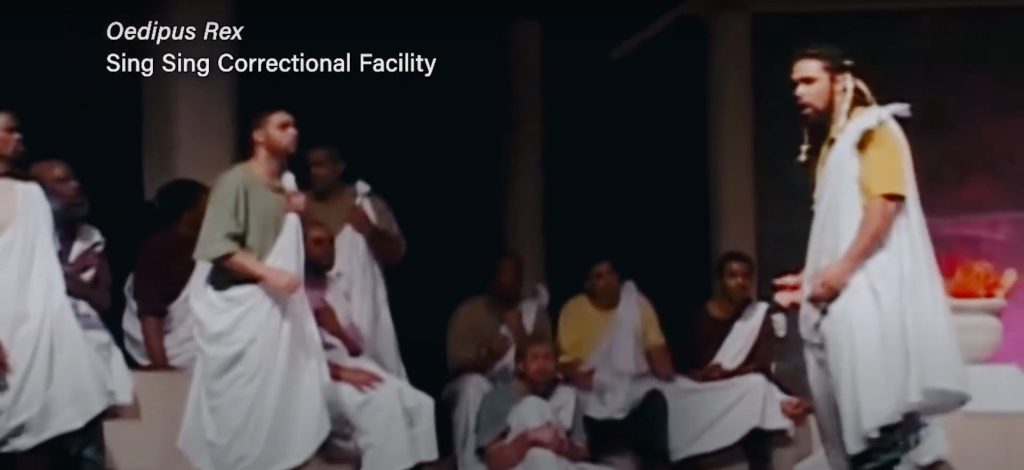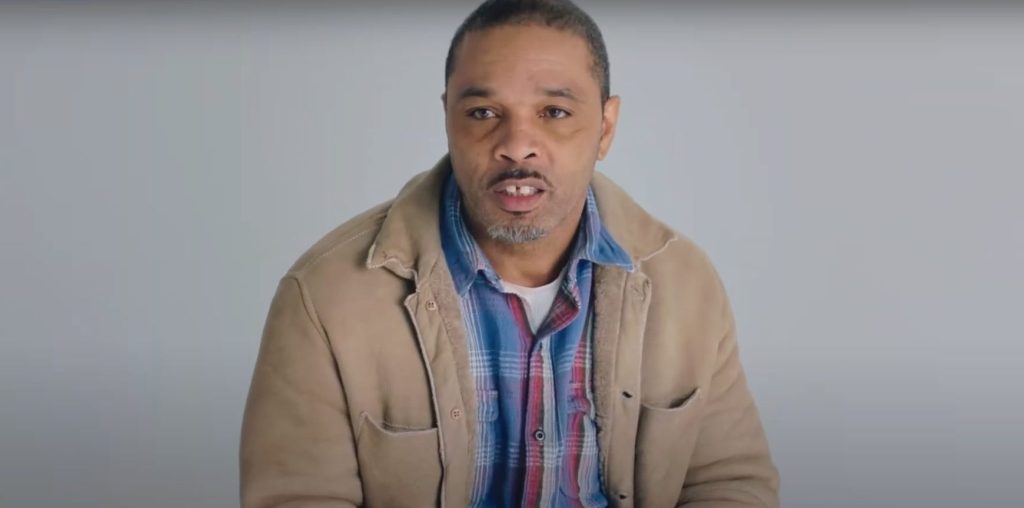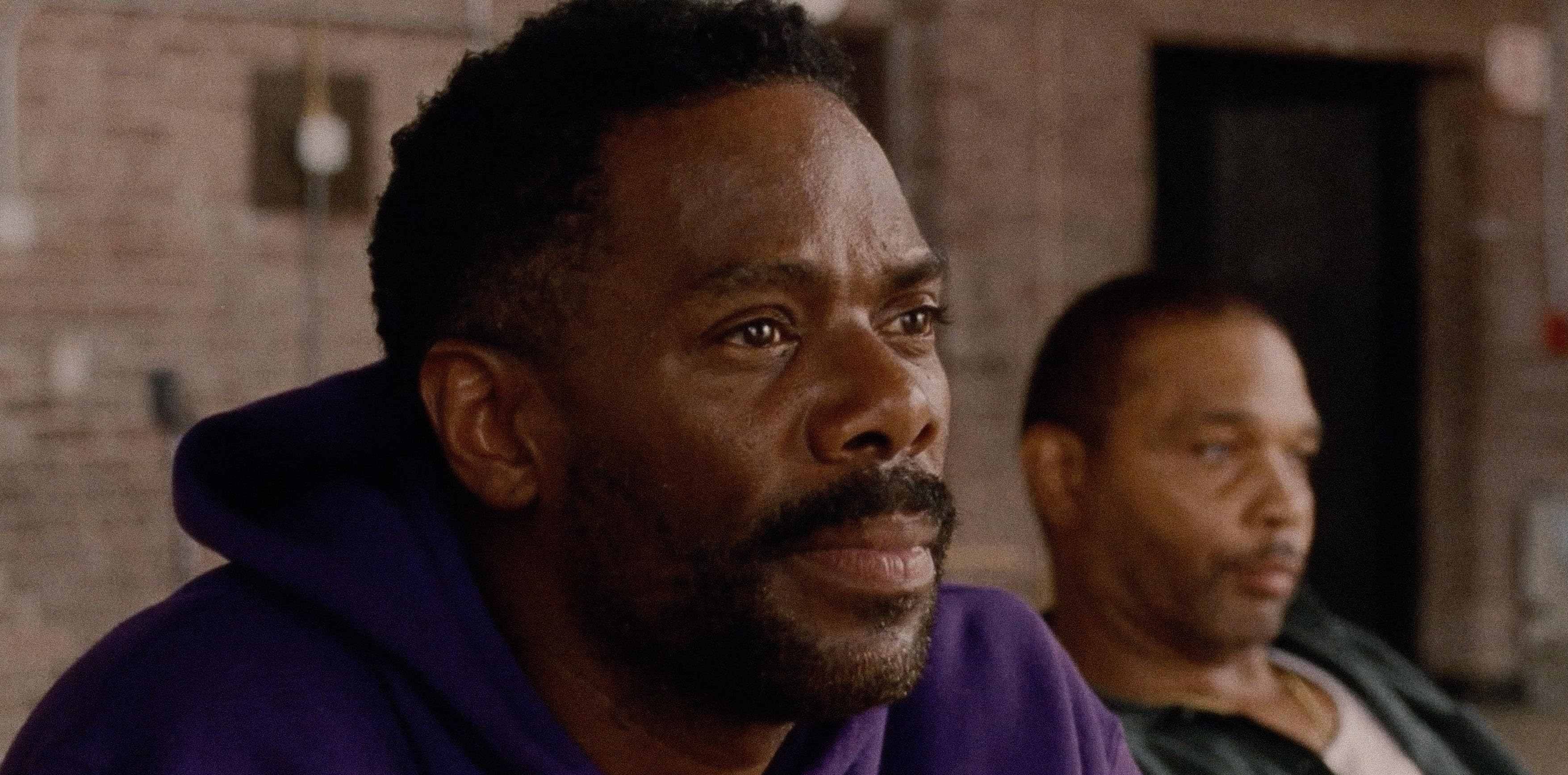In ‘Sing Sing,’ an arts program in a correctional facility has a transformative effect on its inhabitants, who, in the quest to escape the confines of their prison walls, find something worthwhile and engaging that leads to new discoveries and personal healing. Under the direction of Greg Kwedar, the film follows John Whitfield, AKA Divine G, and a posse of prisoners from the Sing Sing Correctional Facility who set up a theatrical play amidst their high-security prison through the Rehabilitation Through the Arts (RTA) theater program. The workshop enables them to escape the harsh realities of their incarceration and focus on a collective goal, which ultimately brings them together through their shared struggles.
The poignant drama explores the power of creativity and the importance of art in helping people overcome a dark period in their lives. As the inmates forge ahead with their play, they confront their fears, shortcomings, tragic pasts, and resolutions for the future. The script highlights the potential for second chances in life and how it represents hope for those who have been cast aside by society for their misdeeds. It also opens the eyes of the incarcerated who have lost their way by examining their resilience and attitude to persevere with a task and see it out to its full completion with the utmost sincerity. Therefore, with its rousing examination of prison life that is dedicated to more than just being captive, unearthing the roots of ‘Sing Sing’ is a worthwhile task to determine if it is based on a true story.
Sing Sing is Based on a Real-Life Rehabilitation Program
Drafted by director Greg Kwedar and co-writer Clint Bentley, ‘Sing Sing’ is an actual account of events surrounding the Rehabilitation Through the Arts program at the Sing Sing Correctional Facility in New York — formerly known as Ossining Correctional Facility — at 354 Hunter Street in Ossining, Westchester County. In 2016, Kwedar went into a prison to shoot a small documentary with a friend, witnessing a special program attended by the inhabitants inside, which sparked his interest in prison programs. Later, while conducting research on the topic, he stumbled upon a 2005 Esquire report by John H. Richardson, titled ‘The Sing Sing Follies,’ which highlighted the work of the RTA in the Sing Sing facility where prisoners staged a play titled ‘Breakin’ the Mummy’s Code,’ penned by Brent Buell.
Both materials became the basis of the film’s narrative as they utilized the acting talent of the original Sing Sing Correctional Facility production. John Whitfield and Clarence Maclin, former convicts of Sing Sing, had their personal input in the story. Maclin, AKA Divine Eye, also plays himself in the film, elaborating on the RTA and their developmental efforts. “The success of RTA comes from the men in RTA, the people, the participants, the volunteers, individuals being woken up by other men, by other people who care in prison,” he said. “You have individuals who have been written off by society. Basically, once you get a sentence, 20 years or whatever, society figures you’re dead already; you no longer can contribute to society. However, RTA recognized that these men still have something to contribute.”
Sing Sing Depicts a Communal Tale of Healing
Before penning the script, Greg Kwedar and his longtime writing partner, Clint Bentley, followed the Rehabilitation Through the Arts program religiously, attending several productions and staying in touch with the people running the organization. They even talked to previous alums who revealed the transformative nature of the workshop in their lives. Some even stated that it brought them back from the brink. Therefore, ‘Sing Sing’ was a culmination of both the research undertaken by Bentley and Kwedar and the personal accounts gathered from those who have already been a part of the foundation and have had their lives positively changed because of it. Kwedar has also conducted some prison workshops for the RTA, personally involving himself in the efforts.

The film takes a new approach to the well-versed prison stories that have become awash with cynicism, instead presenting one that is full of hope and brings to the fore the kindness and compassion hiding underneath tough exteriors. It attempts to break the mold by displaying the lives of inmates in a new light where they are trying to change and leave behind their wrongdoings. The director felt that the movie business had solidified expectations within an audience when watching prison narratives, but he wished to shift that perspective.
As reported by Deadline, Kwedar said, “The story is really about this group of people who found a community through the arts, on the stage, and we told it in a community way with the people who really lived it, alongside some of our world’s greatest actors who shared the same spirit and heart.” To that, Paul Raci, who plays Brent Buell, added, “On more than three separate occasions, one of the men that actually lived the experience in prison told me, ‘You know, if I had just met this acting teacher or this program before I did what I did to end up in Sing Sing, I wouldn’t be here. And I know that’s the truth, it’s the truth about my life because I met an acting teacher who opened me up. So, it’s a beautiful story, and this program changes lives.”
Sing Sing Illustrates the Life-Altering Power of Creative Agency
Through its central theme of exploration via a creative venture, ‘Sing Sing’ portrays how seemingly complex and unedifying situations can be expressed through a work of art that opens people to their inner voices. More than anything, it brings the whole group together under the banner of a noble pursuit. The people inside the prison are human, and as such, their efforts are geared toward altering their fortunes and overcoming their pitfalls. “The message that we’re really trying to get out is that there’s human people inside of this prison,” said Clarence Maclin. “And I think people who see this will see that there’s a more human quality to individuals who you might cast off…”

Maclin concluded, “There’s a man in there and you can wake him up, and art is the perfect tool to do it.” Today, he helps out young, at-risk teens by providing them the support and guidance to stop them from making the same mistakes he made. His experiences with the RTA have made him sympathetic to others who have been ostracized and need help to return to normalcy. In the narrative, his bond with Divine G plays an integral part in illustrating the friction between the two contrasting personalities. The two form a relationship that becomes the heart of the story, exploring how mindsets change through a deep connection.
Co-writer Clint Bentley summed it up, saying, “It [the film] is based on, really, a friendship between two men who are in this program in the prison, and they are very different people, very different personalities, need very different things from each other and the program.” By delving into the real-life successes of the RTA program, ‘Sing Sing’ brings to life the true story of how a person’s journey towards redemption can begin at any point in his life, even in prison. In the quest to change their lives, no time is too late, especially when the helping hand is extended through the medium of a theater production with profound implications for those taking part.
Read more: Best Prison Shows on Netflix


You must be logged in to post a comment.